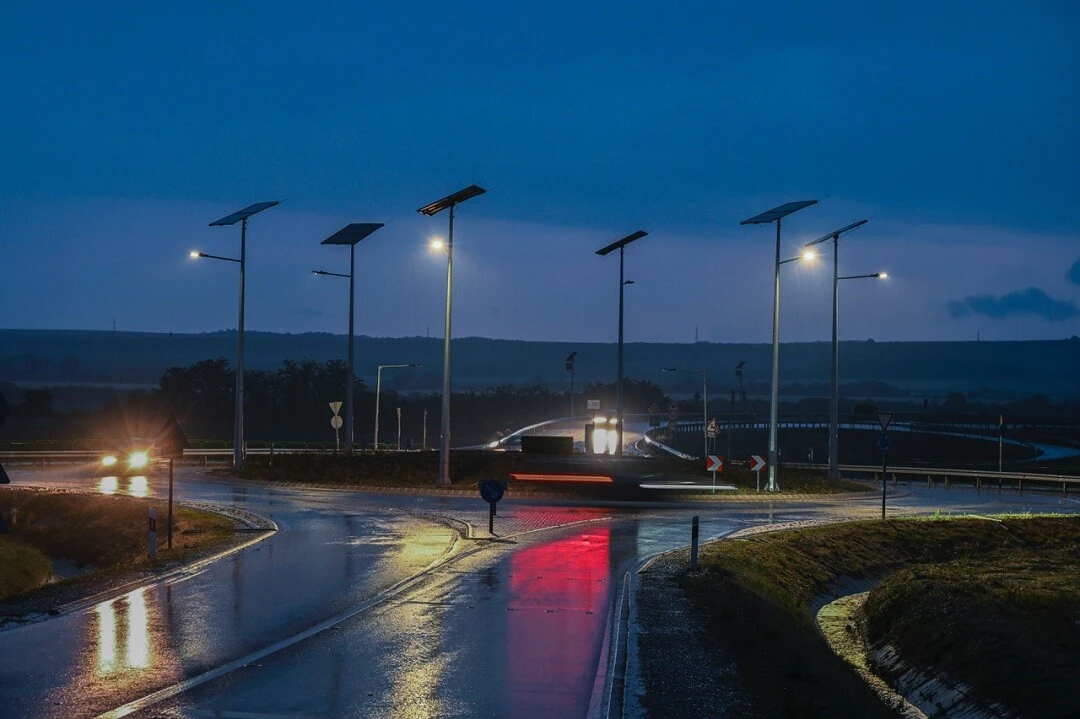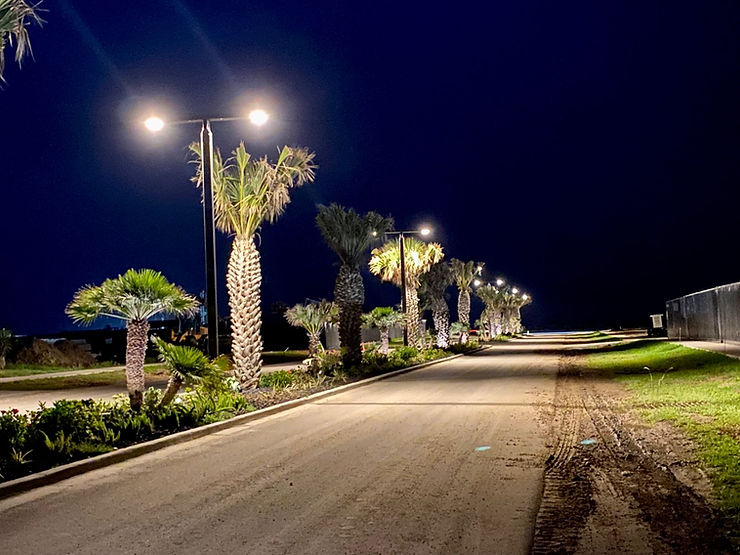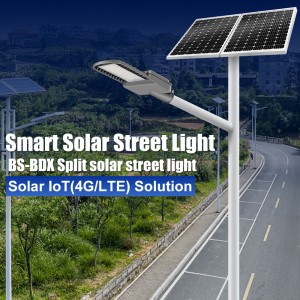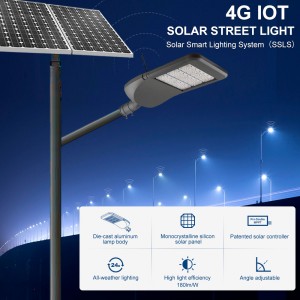A Bright Step Toward Sustainable Smart Cities
Imagine a city where every streetlight automatically adjusts its brightness based on traffic, weather, and time, saving energy and maintenance costs while ensuring safety. That’s not science fiction — it’s IoT-based solar street light technology.
As cities strive toward sustainability and carbon neutrality, traditional street lighting systems are proving inefficient. They rely on fixed schedules, manual maintenance, and outdated energy management. Enter the IoT-enabled solar street light remote monitoring system — a revolutionary technology that merges solar energy, smart sensors, and wireless communication to optimize lighting, reduce energy waste, and extend system lifespan.
In this article, we’ll explore how this system works, its benefits, the implementation process, and why it’s essential for any smart city project.
What Is an IoT-Based Solar Street Light Remote Monitoring System?
An IoT-based solar street light remote monitoring system combines solar energy technology with the Internet of Things (IoT) to create intelligent, self-regulating lighting networks. These smart street lights can:
Collect real-time data on sunlight intensity, battery charge, and environmental conditions.
Communicate via long-range wireless modules like LoRa-MESH.
Automatically adjust lighting levels to match pedestrian or vehicle activity.
Alert maintenance teams instantly when issues occur.
In essence, the system transforms ordinary solar lamps into autonomous, data-driven, and remotely managed lighting solutions.
Why Cities Need Smart Solar Street Lights?
Solve Energy Waste and Inefficiency
Traditional solar lamps switch on and off at fixed times — often staying on when streets are empty. This wastes power and shortens battery life. IoT-enabled systems use sensors and AI algorithms to adjust brightness automatically, ensuring lights only use energy when needed.
Lower Maintenance Costs
Conventional systems depend on manual inspection to detect faults — a time-consuming and costly process. Smart systems send real-time alerts for battery, LED, or sensor failures, allowing faster response and reducing downtime.
Support Green Energy and Carbon Reduction Goals
With global “carbon neutrality” goals in focus, integrating IoT and solar energy offers a scalable path to sustainability. These systems directly contribute to green city development and renewable energy adoption.
Improve Public Safety and Urban Efficiency
Adaptive lighting ensures well-lit paths when pedestrians or vehicles are detected, improving safety without wasting electricity. It also enhances visibility for surveillance systems and emergency response.
How the Smart Solar Street Light System Works?
The IoT-based solar street light system consists of two main parts:
- The street light control unit (local node)
- The remote monitoring platform
Step-by-Step Workflow
Data Collection: Sensors detect solar radiation, temperature, voltage, and motion (via microwave radar).
Intelligent Decision-Making: A microcontroller (e.g., STM32) analyzes the data to optimize charging, discharging, and brightness.
Wireless Communication: The system uses LoRa technology to transmit data up to 10 km without the need for cellular networks.
Remote Monitoring: A central platform displays the real-time performance of every lamp — allowing operators to monitor, control, and diagnose faults remotely.
Automatic Fault Detection: If a lamp malfunctions, the system immediately sends diagnostic information, reducing repair delays.
Key Features and Benefits of Smart Lighting System
Smart Energy Management
Automatically adjusts charging/discharging based on battery health and sunlight.
Maximizes energy utilization while extending battery lifespan.
Long-Range Wireless Communication
Powered by LoRa modulation technology, it offers long-distance, low-power communication ideal for city-wide deployment.
Intelligent Fault Diagnosis
Detects and reports issues in solar panels, batteries, or LEDs instantly.
Reduces maintenance frequency and operational costs.
Eco-Friendly & Sustainable
Uses 100% renewable solar energy.
Reduces carbon footprint by minimizing electricity use from the grid.
Cost-Effective Urban Lighting
Cuts down on maintenance labor and electricity bills.
Provides a high return on investment (ROI) for municipalities and private developers.
Implementation and Design Overview
Hardware Components
Solar Panels: Capture and convert sunlight into electricity.
Battery System: Stores energy and powers the lights at night.
Sensors: Measure light intensity, voltage, current, and temperature.
Controller Unit: Manages charging, lighting levels, and fault detection.
LoRa Wireless Module: Enables long-range communication between streetlights and the central platform.
Software System
The embedded software controls:
Sensor data acquisition
Charging/discharging management
Fault diagnosis algorithms
Data transmission protocols
With an intuitive monitoring dashboard, operators can access real-time analytics, predictive maintenance alerts, and system optimization tools.
Real-World Applications of IoT Solar Street Light
- Urban Smart Lighting Networks
Municipalities can deploy thousands of IoT solar lamps across cities, integrating them into smart city control systems for seamless management.
- Remote Rural Roads
In areas lacking power infrastructure, these systems offer self-sufficient, maintenance-free lighting solutions.
- Industrial and Campus Environments
Factories, universities, and parks use IoT-enabled solar lights for security and efficiency, while reducing operational costs.
- Disaster and Emergency Zones
Since these lights don’t depend on the grid, they’re perfect for emergency response and post-disaster recovery operations.
Why Businesses and Cities Should Invest Now?
Smart solar lighting isn’t just an upgrade — it’s a strategic investment in energy savings, environmental responsibility, and infrastructure modernization.
- Governments can reduce urban lighting energy costs by up to 60%.
- Businesses can enhance brand reputation through green innovation.
- Communities gain safer, cleaner, and more reliable environments.
As IoT and renewable technologies converge, early adopters of IoT-based solar street light systems will lead the charge toward the next generation of sustainable urban living.
The integration of IoT with solar street lighting is transforming how cities illuminate their roads. With real-time monitoring, fault detection, and intelligent control, these systems represent the future of smart, sustainable, and efficient urban infrastructure.
Whether you’re a city planner, energy company, or developer — adopting an IoT-based solar street light remote monitoring system means you’re not just saving energy — you’re building the smart cities of tomorrow.
FAQs About IoT-Based Solar Street Light Remote Monitoring Systems
1. What is the main advantage of using IoT in solar street lighting?
IoT enables real-time monitoring, predictive maintenance, and automated brightness control, reducing energy waste and maintenance costs.
2. How does the system communicate without the internet?
It uses LoRa wireless technology, allowing devices to communicate over distances up to 10 km without relying on cellular or Wi-Fi networks.
3. Can it work in remote or rural areas?
Yes! Since it’s powered by solar energy and operates off-grid, it’s ideal for remote locations.
4. Is it cost-effective?
Absolutely. Although the initial investment may be higher, it saves significantly on electricity, labor, and maintenance in the long term.
5. What’s the lifespan of the system?
With proper installation and maintenance, IoT-based solar street lights can last 10–15 years, thanks to improved battery management and smart energy control.
6. How does it support sustainability goals?
Minimizing power consumption, extending equipment life, and using renewable solar energy help cities meet carbon neutrality and green infrastructure targets.
Post time: Nov-19-2025







